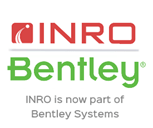Making Accessibility More Accessible
Jamie Cook & Mark Illife
Veitch Lister Consulting, Queensland
This presentation was delivered at the 2021 Online Conference Series and until October 2022 is only available to registered delegates and Content Access Pass holders via Interchange. For information on accessing this and other presentations please review the Content Access Pass options.
ABSTRACT
Improving accessibility is an outcome sought by regional planning policies across Australia. Improving accessibility makes it easier for people to access the goods and services they need. Improving accessibility also needs to reflect the needs of the whole of society, including those that don't have access to a car. Increasing accessibility by active and public transport modes can support equality and create more efficient and functional urban environments.
The Queensland Department of Transport and Main Roads (TMR) has been modelling accessibility using their Land-use Urban Planning and Transport Accessibility Indicators (LUPTAI) tool. This has been used to inform policy and strategy development including the recently published SEQ Regional Transport Plans. However, LUPTAI's dependence on proprietary software and data has been a significant barrier to adoption for practitioners outside of TMR.
VLC's recent work aims to change that by freeing this tool from its proprietary shackles and making it available via an easy-to-use plugin for the popular open-source GIS platform QGIS. In addition, the core functionality of the accessibility computations is exposed through a Python API, unlocking the ability to directly integrate with the broader python data-science eco-system. This has been leveraged to develop a calibration module which utilises Jupyter notebooks to assess LUPTAI's predictive power against other transport planning outcomes.
We have also curated a set of open-source data from both government and public publication, allowing the creation of unencumbered reference model, and reduced the learning curve tool with simplified online documentation. Combined, these changes make it possible for a planner to use LUPTAI in the freely available QGIS platform without requiring significant training or supervision. We expect that this leads to a greater ability for urban planners to incorporate accessibility into their planning and more accessible cities for us all.
Author
Jamie Cook | VLC
Jamie Cook has over a 16 years of experience in transport modelling and software development. He is passionate about advancing the state of transport model development through the application of data science and software engineering best practices. The employment of version control and continuous delivery practices have been key to VLC's ability to maintain transport models covering the majority of Australia's population.
Through his career he has worked on a number of complex modelling scenarios for a range of public and private sector clients on all aspects of travel modelling ranging from land-use and demography to low-level assignment routing algorithms to high-level visualisations capable of communicating the bigger picture. Jamie is a keen proponent of the less-is-more school of visualisation which focuses on improving the comprehension of key analysis insights.
Mark Illife | VLC
Mark Illife has over 14 years’ transport planning experience and has a comprehensive professional background in transport planning and the application of transport models. Mark has worked extensively with several transport models and has contributed to developing strategic planning policy for state and local governments. Mark is passionate about measuring what matters and believes that accessibility is an essential aspect of Integrated Transport and Land Use Planning.








